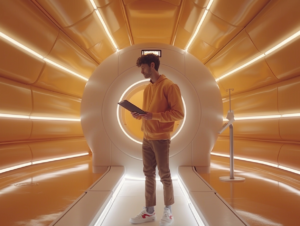Starting a Consulting Position After an Academic Residency, My Take

by Everett Cavanaugh
As a medical physics resident, I trained in a large academic center with the kind of support that makes complex work feel seamless: a well-funded infrastructure, reliable vendor relationships, and a full team of specialized physicists. Each physicist focused on a specific modality, and our team worked across different areas of the hospital. We had time to dive deep into testing protocols, expand beyond regulatory requirements, and gain confidence in a controlled setting. The environment was designed for education and precision, and it was ideal for building foundational knowledge.
But looking back, I now realize that some practical elements of clinical work were missing. The equipment we tested was typically in great shape—issues were rare, and when something did come up, it was often resolved by a service engineer before we even got involved. This meant that while I became proficient in routine evaluations, I rarely had to troubleshoot or make real-time decisions about borderline equipment performance or incomplete documentation. Around the midpoint of my second year, I started to question the clinical value of what I was doing. Some of the work felt more like a checklist exercise than a contribution to patient care.
After completing residency, I accepted a position with OnePhysics. The transition from academic residency to consulting was eye-opening. In contrast to the academic environment, many of the facilities I now serve are smaller, often with limited resources and less access to in-house expertise or vendor support. Instead of confirming that everything was functioning well, I began identifying problems that had gone unnoticed or had been tolerated for extended periods of time. I was seeing issues I’d never encountered during training: imaging artifacts being ignored, QA programs that were outdated or poorly implemented, and equipment that clearly needed attention. At many sites, I found problems that—had they existed in my residency program—would’ve triggered immediate vendor intervention or even equipment downtime. In the real world, these issues were often being worked around or overlooked entirely.
For those of you still in residency, it’s important to understand that consulting demands a different mindset. You’re not just applying what you learned—you may be the only physics expert in the building. There may not be a team of seasoned physicists down the hall. You need to assess the situation, identify the issue, and recommend a fix—sometimes on the spot. It’s a steep learning curve, but one that builds confidence quickly.
Once I adjusted to the pace and autonomy, something clicked. For the first time, I could clearly see the direct impact of my work. My evaluations helped clinics catch real issues, avoid regulatory penalties, and improve diagnostic quality. It wasn’t just theoretical anymore—I was helping protect patients and support technologists who rely on our guidance to keep imaging safe and effective.
To residents considering consulting: know that it’s not easier or harder than working in a hospital—it’s just different. You’ll rely heavily on the foundation your residency gave you, but you’ll also need to grow quickly in areas like communication, independent judgment, and time management. Most importantly, you’ll discover just how critical our role is in the broader healthcare ecosystem.
If you’re up for the challenge, consulting can be an incredibly rewarding path—one where your expertise makes a visible, tangible difference every single day.
